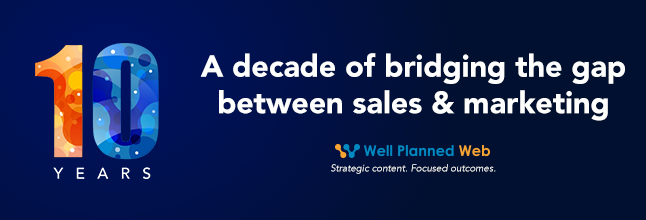Why Most B2B Content is Failing The Sales Team
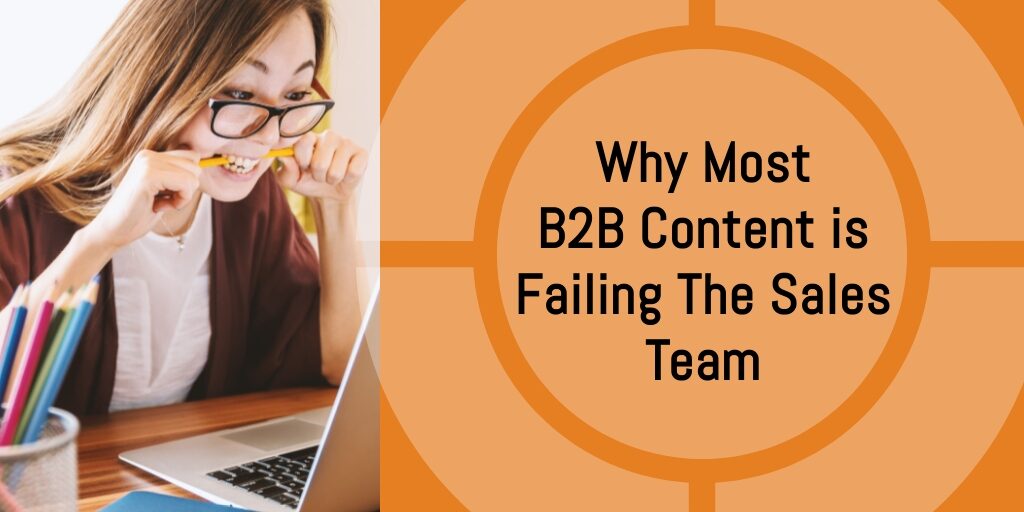
Marketing teams have been cranking out content for decades now — trying to generate demand, generate leads and generate a bond with their sales brothers and sisters.
So why aren’t sales teams swooning over each new shiny content publication? Is it off the mark? Is it unusable? Is it just not enough?
The answer: All of the above. ☹️
The painful truth is that only one-third of the content that salespeople actually need comes from marketing.
What’s worse is that sales teams still feel forced to create too much of the content they need on their own. We’re not talking rewrites or variations of existing content here, folks — we’re talking content “from scratch.” Yikes. (Source: CSO Insights)
Understanding the Gap
The key to understanding the sales and marketing content gap is to look at two distinct categories of content.
Customer-Facing Content
This is the content most of us have come to know as “Content Marketing.” This includes Case Studies, White Papers, Blog Posts, Infographics and Videos. More importantly, this is the content that’s meant to fill the “decision” space between when a prospect becomes aware of your product/service and when they actually interact with a salesperson. This is the content that puts customers in the driver’s seat. For years, we’ve assumed that customer-facing content rules. And, it absolutely does. But, only up until prospects get very serious about considering your product or service.
Sales-Enablement Content
With any complex sale, a salesperson is still critical to navigating the specific questions, concerns, circumstances, negotiations and buying committees that surface during the process. Yet many salespeople are left to fend for themselves when it comes to these mission-critical communications.
The term “sales enablement” has been thrown around a lot in recent years. But, get past the fancy buzzphrase and you’ll see that this is where the content not only starts helping the customer — but supercharging salespeople, as well.
This is the content that joins customers and salespeople for those conversations that build a bond. This content facilitates a deep understanding between customers and salespeople.
Sales-enablement content includes:
- ROI calculators
- competitive battle cards
- presentations
- SOW sidebars, enhancements, clout-columns
- vision into life after the sale (such as implementation or onboarding)
- demos
- details about pilot programs
- emails (yes, even a single email)
- dialogue-driven examples, best practices and
You may be thinking, “Wait a second…if most prospects avoid salespeople like the plague, why on earth would we spend time creating content that helps in conversations that are clearly dwindling away?”
Turns out we’ve had that part completely wrong.
Buyers Actually Want to Talk to Salespeople
I know. I know. Those of you who know me well or have heard me speak have seen me pull out the now-famous Forrester research that states that buyers want to get through 70+% of the decision process before they even talk to a salesperson. Here’s what’s changed: 90% of buyers say they are willing to engage with sales earlier. The key is — they only want to engage if the salesperson can actually provide value. Go figure. (Source: CSO Insights)
But, what do buyers actually expect?
Buyers don’t want to engage earlier with just any salesperson. Far from it. They expect salespeople to bring much more to each interaction.
Today, buyers want salespeople to:
- actively research and understand their business
- respect their time
- focus on the long-term view of success (beyond the sale)
- radically change their vision
- understand the buying committee
- improve their expertise
How to Bridge the Gap in 2020

The course-correction is simple. Arm your salespeople with more content they need to meet the expectations above. (Pssst: no offense content purists — that may mean pausing the production of that fancy new infographic you’ve been perfecting.)
But to do this, you’ll likely need to slow down in order to speed up.
1. Commit to getting serious about your audience. Together.
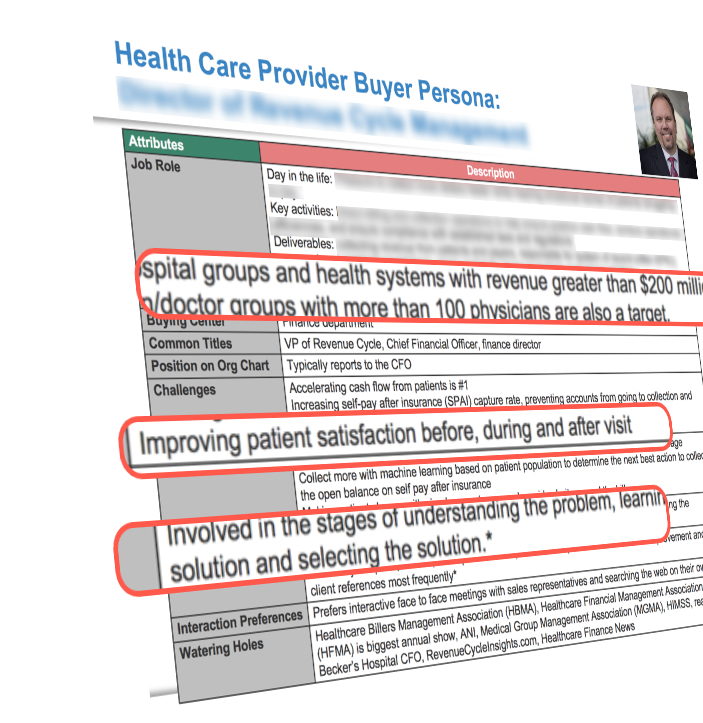
Too many marketing and sales teams are “making do” with incredibly weak audience personas that just plain suck.
Yup, I refuse to be polite about this any longer.
Time and time again, we speak to marketing and sales teams who have one-page personas that kinda-sorta outline a few demographics and assumptions. These weak personas — often produced by big-name agencies are worthless and wasteful. Yes, the clients just hope for the best and cross their fingers that it makes a difference. It’s a disgrace. There I said it.
Together, sales and marketing teams need to take a stand and demand high-quality immersive audience profiles that impact both customer-facing and sales enablement content. Click To TweetUnsure whether your audience documentation is of any value? Here’s one way to find out — do you use it?
No seriously…do you pull it out every week to reference its action plans, its requirements and the powerful “lens” it provides before embarking on any new plan for content?
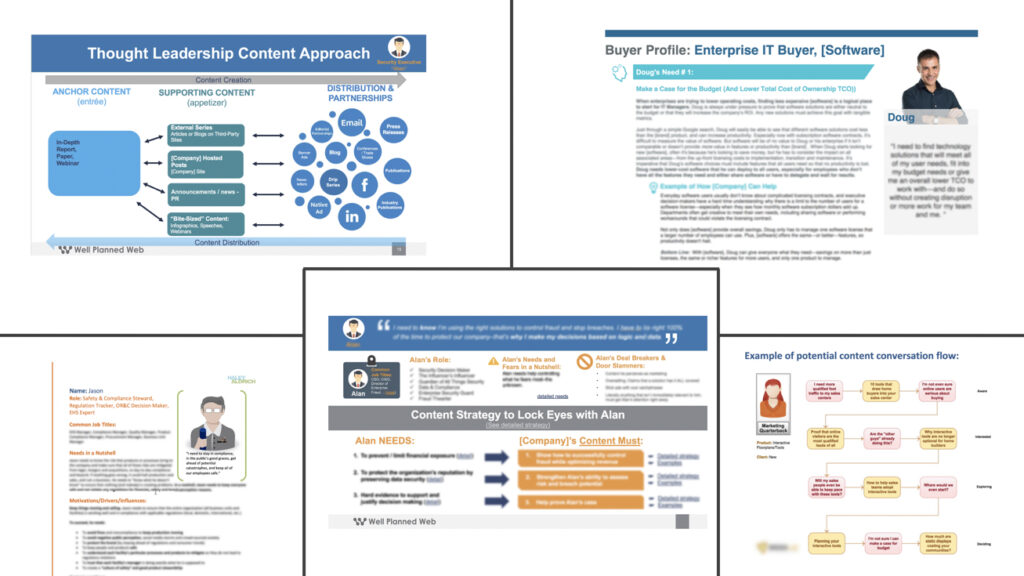
If not, you’ve likely got an expensive deliverable that will only cost you more in wasted time in 2020.
Scrap it. Divorce it. Help your executives see the light. Then, partner with a team that won’t rest until an immersive audience profile is launched and put into action.
2. Develop and Implement a Sales-Enablement Content Strategy
You guessed it. The lead and awareness content strategy is only part of the picture now. Once you better understand your audience, it’s time to also understand how your sales team will best interact with them. This goes well beyond the simple “buying journeys” we’ve come to know and love. A real Sales-Enablement Content Strategy includes a detailed plan for specific conversations and interactions.
Conversation Starters

Customers are fed-up with salespeople who start the conversation with “So, tell me about yourself,” or “I see you came to our website.” These are worthless exchanges that could be bypassed with a simple LinkedIn Search and some basic research. What customers really want is to feel like salespeople understand their business from the get-go. They want to dive into the meat of the matter — now.
A smart sales-enablement content strategy includes conversation starters ranging from meaningful questions that can be asked on LinkedIn — all the way to the conversation starters that may kick off a first phone call. Such starters will include details that reflect an understanding of the buyer’s industry, circumstance or detailed need.

Let’s look at Rob, the CIO at the Behemoth Healthcare Consortium who struggles with document security across 2,000 hospitals.
🚫 Weak Conversation Starter:
“Rob, tell me about Behemoth Healthcare. What’s your biggest challenge?”
👍🏻 Better Conversation Starter:
“I see you have over 2,000 locations at Behemoth. What kind of documents seem to slip through the security cracks most today?”
🙌🏻 Best Conversation Starter:
“So, when Physicians enter prescription information, how is it routed to the patient today? As the owner of security, what part in this process makes you cringe most?”
Better Conversation starters meet expectations. The Best Conversation starters exceed them.
Objection-Handling Content
In WPW’s sales-enablement strategy docs, we affectionately calls these “Deal Breakers and Door-slammers.”
Think about the most common “push back” topics that are at the heart of every sales conversation. Your salespeople know these all too well. But have you ever discussed them in detail? Together, you can tackle these doozies — one door-slam at a time. The best objection-handling content shows that the salesperson is listening — and isn’t mindlessly dancing around the elephants in the room.
For 2020, schedule a workshop with your best salespeople and ask them point-blank about the questions or statements they dread the most. Look at this through the lens of your new audience profile. Then, get creative.
Let’s look at an example using our favorite CIO, Rob, once again…

Objection-Handling for CIOs like Rob:
| Objection | Objection-Handling Content |
| Too many of our doctors still prefer written prescriptions over secure digital prescriptions. They won't use digital prescriptions. | Why nurse practitioners are becoming the better player in ensuring secure digital prescriptions. |
| We can't convince our executive team of the value of secure document storage. | Tackling the most costly patient complaint: privacy breaches. |
Case-Building Tools
Sales would be so much easier if decision-makers could just make the purchase in a vacuum. The reality is that 6.4 buyers are involved in making a decision over a period of 5 months or longer.
Bottom line: Salespeople no longer have to convince the contact they know. They must instead arm him/her with everything needed to make their case in-house.
ROI Calculators
Think these invaluable calculators don’t qualify as content? Think again. There’s nothing more compelling to a prospect than numbers they can take to their superior about savings of dollars, headaches, overhead or time. Don’t assume these calculators need to be fancy or code-intensive. Remember, this is a sales enablement tool. Even MS Excel spreadsheets can do the job, so long as the savings are clear.
Competitive Comparisons
As much as we can’t let the competition drive our marketing strategy — they’re part of a salesperson’s reality. And, prospects will want to know how you stack up. Whether you create side-by-side comparison lists or full-blown battle cards — the important thing is to inject confidence and authority into every discussion about the competition.
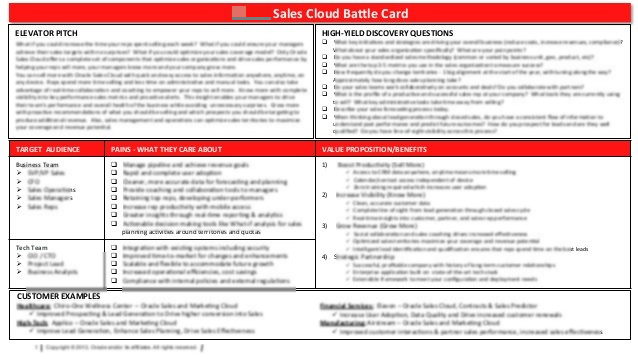
Battle cards are often the best route to ensure every sales player — from the most junior to the most seasoned — understands how you measure up. And, don’t shy away from your weaknesses. Often times, openly explaining how you intend to address any weaknesses builds trust.
3. Develop a Thought Leadership Playbook
Perhaps the most impactful conversations in the sales process include consulting on the solution, stoking a new vision and creating momentum beyond the sale, itself. Some of these may already exist in your current content library. If so, I can almost guarantee only a fraction of your salespeople know they exist.
Review your content through the sales team’s eyes — or better yet, partner with your sales team to review what content would be most helpful at what stage of their conversation. Then, see if you need to shorten, modify or edit the existing content to fit within the expected conversations.
Finally, map the content to the stages in the buying journey and the sales conversation. Tools like Uberflip, WittyParrot and countless others make it easy for marketing and sales teams to create content that’s both customer-facing and sales-enabling.
Are You a Sales or Content Leader Ready to Bridge the Gap?
Make 2020 the year of clarity and continuity between your two teams. Even the smallest shift towards a sales enablement content strategy can lead to more effective sales conversations. Need a strategic content partner who gets both sides of the content equation? Drop us a line and we’ll help design and execute a program that strikes the balance between maximizing leads and enhancing sales.
